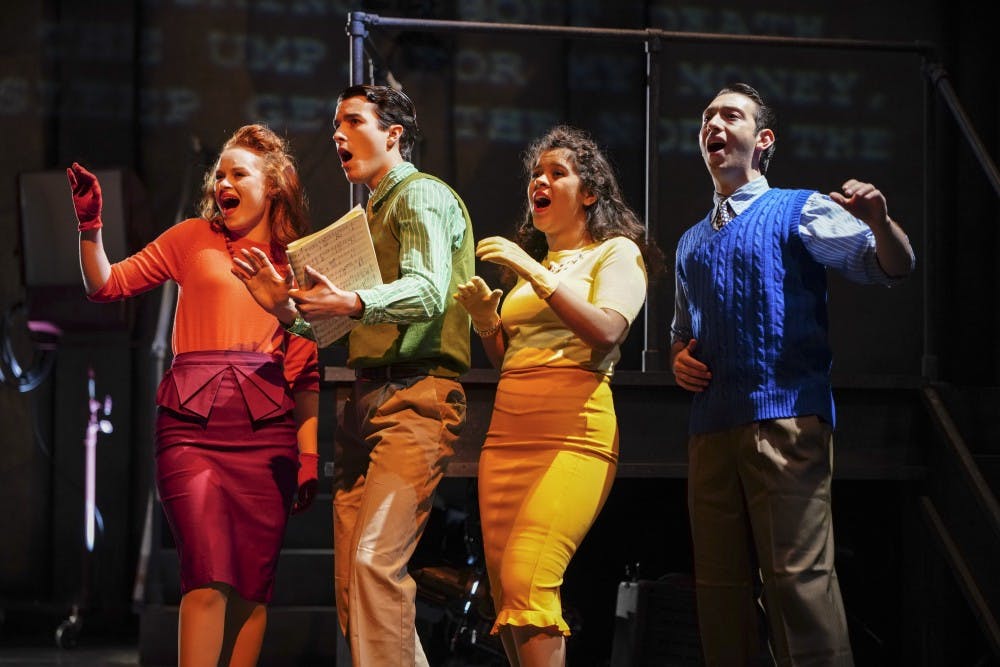Set to a score full of jazz, City of Angels depicts the separate, but connected worlds of a writer and his characters, and the challenges a writer faces when making his work fit for the big screen.
City of Angels was performed April 13 to 21 at the Ruth N. Halls Theatre. The play, set in late-1940s Los Angeles, follows the story of a writer adapting his crime noir novel into a screenplay for a Hollywood movie.
The musical, which premiered on Broadway in 1989, deals with the tumultuous trials and successes of writer Stine and his detective character Stone.
Buddy, Stine's overpowering director and producer, is constantly making changes to Stine's screenplay. In one scene, Buddy scolds Stine for writing a scene in which two characters confront the issue of race. Buddy doesn't like this, so he demands Stine change it.
“I’m not asking you to write bad,” Buddy said.
“Just safe,” Stine replies.
The musical plays with the parallels between Stine's real-life experiences and the fictional noir world he writes up with Stone at the center.
Each character of the production also plays a character in the screenplay. The musical teases this idea in multiple scenes.
In the real world, Stine talks to Donna, who works on the movie set, about his fictional character Oolie, played by the same actress. Carla, in the real world, gives Stine tips on how to write the character of Alaura in the screenplay.
The set design plays cleverly on this as well. Irwin, a character in the screenplay who’s killed and laying under a sheet in the morgue, is suddenly Buddy on a massage table. The worlds change before the audience’s eyes.
The two worlds are clearly separated by the use of color and costuming. Stine’s world is vibrant and colorful, while Stone’s is black and white, true to classic film noir movies of the time.
In one instance, the audience sees the two worlds side-by-side on stage, as Stine’s wife Gabby and Stone’s assistant Oolie sing about the lack of understanding from the men in their lives.
Though the show teases the closeness but evident separation of the two worlds, viewers see the two collide when Stone scolds Stine for changing the script. The two battle it out in song.
“You’re nothing without me,” they sang.
While both Stine and Stone battle their own personal and professional conflicts, the two of them overcome their problems toward the end of the show.
Stine finally has enough of Buddy messing with this story, and it all comes to a head when performer Jimmy Powers is cast as Stone, instead of the true Stone living in Stine’s imagination.
After a confrontation with Buddy, Stine quits the production.
“It’s time I got back to the reality of fiction,” Stine said.
The tables turn and it’s Stone’s turn to write Stine’s actions. Stone writes Stine a “Hollywood ending” as Stine defeats the Hollywood enemies.
It truly is a Hollywood ending fit for the silver screen as characters come together in an all-too-familiar song that wraps up the happy ending.
“I’m nothing without you.”




